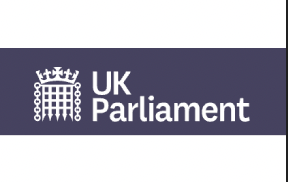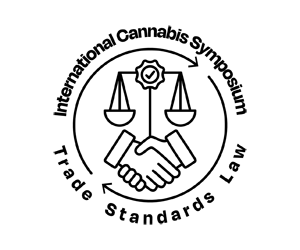Table of contents
- 1. What can paramedics prescribe?skip to link
- 2. What did the Advisory Council on the Misuse of Drugs recommend?skip to link
- 3. What was the government’s response?skip to link
- 4. Which professions can be independent prescribers?skip to link
- 5. Why expand who can prescribe controlled drugs?skip to link
- 6. Read moreskip to link
On 14 September 2023, the House of Lords will consider the following question for short debate:
Lord Butler of Brockwell (Crossbench) to ask His Majesty’s Government, further to the written answer by Lord Sharpe of Epsom on 24 July (HL9391), when they plan to introduce legislation to enable prescribing of controlled drugs by paramedic independent prescribers, as well as other changes to the use of controlled drugs in healthcare.
In the cited written question, Lord Butler asked the government for the reason behind “the delay in making the regulatory changes to the Misuse of Drugs Regulations 2001, with particular reference to the prescribing of controlled drugs by paramedic independent prescribers”.
Lord Sharpe of Epsom, parliamentary under secretary of state at the Home Office, responded that the government would bring forward legislation to “enable prescribing of controlled drugs by paramedic independent prescribers alongside other changes relating to use of controlled drugs in healthcare by podiatrists, therapeutic radiographer independent prescribers, and those acting under patient group directions […] as soon as possible”. He added the relevant regulations would be “subject to parliamentary procedure”.
On 1 August 2023, Lord Sharpe restated the government’s commitment to legislate, and confirmed that changes could be made by a statutory instrument.
1. What can paramedics prescribe?
NHS England explains that advanced paramedics, who have undergone additional master’s level training, are increasingly taking on roles in varied clinical settings, including GP practices, minor injuries units, urgent care centres and in accident and emergency departments, and prescribing in such settings. This aligns with the NHS long term plan’s emphasis on multidisciplinary care and aim to relieve pressure in accident and emergency departments.
From 1 April 2018, paramedics have been able to undertake training in independent and supplementary prescribing. Paramedics who complete an approved prescribing programme have their Health and Care Professions Council registration annotated to reflect this.
For paramedic independent prescribers the National Institute for Health and Care Excellence (NICE) guidance states that “prescribers must work within their own level of professional competence and expertise”, using the Royal Pharmaceutical Society’s ‘A competency framework for all prescribers’. Outside of controlled drugs, and within their own level of professional competence and expertise, they can “prescribe any medicine for any medical condition”. This includes “off-label” medicines subject to accepted clinical good practice.
Supplementary paramedic prescribers can prescribe in accordance with a service user’s clinical management plan. This means that they can prescribe medications, including controlled drugs, that have already been agreed by a medical prescriber to be appropriate for a patient’s treatment.
The Health and Care Professions Council explains that all paramedics can supply and administer some controlled drugs under exemptions from the Human Medicines Regulations 2012 or through the use of patient group directions (PGDs) and patient specific directions (PSDs). A PGD is a legal mechanism for the supply or administration of a medicine to patients who meet predetermined clinical inclusion criteria. A PSD is an instruction from a doctor, dentist or non-medical prescriber for medicines to be supplied or administered to a named patient after the prescriber has assessed the patient. This means that paramedics can provide some controlled drugs, for example in an ambulance setting according to a PGD, without consulting a prescriber. However, paramedics are not currently able to independently prescribe controlled drugs.
2. What did the Advisory Council on the Misuse of Drugs recommend?
In October 2019 the Advisory Council on the Misuse of Drugs (ACMD), which makes recommendations to ministers on the control of dangerous or otherwise harmful drugs, supported a proposal by NHS England that the Misuse of Drugs Regulations 2001 be amended to enable paramedics to independently prescribe and administer a limited number of controlled drugs. The ACMD wrote to ministers to recommend the change for the five controlled drugs in the table below.
Table 1. List of controlled drugs for independent prescribing and administration by paramedics
| Controlled drug | Schedule in the regulations | Route of administration |
|---|---|---|
| Morphine sulfate | 2 or 5 (concentration dependent) | Oral and injection |
| Diazepam | 4 | Oral and injection |
| Midazolam | 3 | Oromucosal (through gums and/or cheeks) and injection |
| Lorazepam | 4 | Injection |
| Codeine phosphate | 5 | Oral |
The College of Paramedics selected these controlled drugs based on their relevance to practice and potential benefit. NHS England provided assurances that:
All prescribers would have to complete comprehensive training in order to be considered competent. Prescribers would also have a personal formulary of drugs they can prescribe, which would be subject to regular review. Existing auditing and sanction processes will be used to manage inappropriate prescribing.
3. What was the government’s response?
The government responded to the ACMD in a letter dated 30 September 2022 and published on 3 October 2022. Jeremy Quin, then a minister of state at the Home Office, accepted the recommendation from the ACMD “to amend the Misuse of Drugs Regulations 2001 to authorise paramedic independent prescribers to independently prescribe and administer, and direct others to administer, the five controlled drugs listed, by the specified routes of administration”.
The letter also acknowledged previously accepted ACMD recommendations to allow therapeutic radiographers to independently prescribe six controlled drugs.
Table 2. List of controlled drugs for independent prescribing by therapeutic radiographers
| Controlled drug | Schedule in the regulations | Route of administration |
|---|---|---|
| Tramadol | 3 | Oral |
| Lorazepam | 4 | Oral |
| Diazepam | 4 | Oral |
| Morphine | 2 or 5 (concentration dependent) | Oral and injection |
| Oxycodone | 2 | Oral |
| Codeine | 5 | Oral |
The government also accepted a recommendation, made in April 2020, that therapeutic radiographer independent prescribers “may administer, or direct others to administer, such drugs by the specified route of administration under the Misuse of Drugs Regulations 2001”.
The letter stated that Home Office officials had been asked to start the process for regulatory changes for both pieces of advice, in addition to rectifying technical anomalies by:
- making it explicit that patient possession, pursuant to a prescription by a chiropodist or physiotherapist independent prescriber, is lawful
- making it explicit that a prescription issued by a chiropodist or physiotherapist independent prescriber is a “prescription” for the purposes of the 2001 regulations
- correcting a cross-reference to specify that possession of ketamine by health care professionals that supply or administer controlled drugs under Patient Group Directions (PGDs) is lawful, as intended
4. Which professions can be independent prescribers?
In December 2022, Lord Markham, answering a written question as a parliamentary under secretary of state at the Department of Health and Social Care, described who, beyond doctors and dentists, can prescribe:
Pharmacists, registered nurses, physiotherapists, therapeutic radiographers and paramedics are legally entitled to be independent prescribers. Diagnostic radiographers are legally entitled to be supplementary prescribers. Individuals must have completed an approved post-registration training course and have an annotation placed against their name in the professional register to state that they have completed this course before this entitlement can be utilised. Occupational therapists are currently able to supply and/or administer medicines under a patient specific direction or patient group direction within local clinical governance arrangements.
Collectively, these professions are referred to as ‘non-medical prescribers’ (NMPs). The Care Quality Commission lists benefits of NMPs in primary care:
- enabling quicker access to medicines for patients
- making the best use of the range of skills of healthcare professionals
- addressing demand and workforce issues
Which medicines, including controlled drugs, can be prescribed varies between the professions. NICE sets out the details. For example, physiotherapist independent prescribers can prescribe the following controlled drugs: oral or injectable morphine, transdermal fentanyl and oral diazepam, dihydrocodeine tartrate, lorazepam, oxycodone hydrochloride and/or temazepam. Podiatrists can also prescribe some controlled drugs for oral administration: diazepam, dihydrocodeine tartrate, lorazepam and temazepam.
A coalition of allied health professionals’ representative bodies, including the Society of Radiographers, is campaigning for more professions to be able to prescribe medications, including diagnostic radiographers, speech and language therapists, dietitians and orthoptists.
In its reply to the ACMD published in October 2022, the government said it understood the NHS and Department for Health and Social Care were “conducting further work on prescribing by various professional groups and will seek further advice from the ACMD shortly”. In June 2023, the ACMD supported a proposal from the NHS on electronic prescribing for certain controlled drugs within secondary care and the health and justice system.
5. Why expand who can prescribe controlled drugs?
In a qualitative study in the British Paramedic Journal in 2021, ‘Paramedic independent prescribing: A qualitative study of early adopters in the UK’, paramedic participants who had “longer experience in primary care, out-of-hours or house calls or with an extended remit to provide end-of-life or palliative care” described not being able to prescribe controlled drugs as a limitation. They reported being used to supplying and administering controlled drugs in ambulance practice, and the need to be able to provide opiate-based pain relief in other settings.
Participants were concerned that their prescribing limitations caused confusion in multidisciplinary settings where colleagues had varying individual prescribing abilities. Some were also concerned that employers would favour other professionals who could prescribe controlled drugs, for example nurse prescribers, for roles they could otherwise do.
In a summary of responses to a 2016 NHS England consultation, a majority of individuals (80%) and organisations (61%) agreed that paramedics should be able to prescribe from a proposed list of controlled drugs. The London Ambulance Service NHS Trust, for example, explained their reasons for agreeing:
Existing legislation permits paramedics to administer a limited range of controlled drugs. This history of controlled drug use coupled with positive audit and research data suggests that paramedics are capable of using controlled drugs safely and to good effect […] The provision of prescribing rights for controlled drugs would enable paramedics to optimise therapeutic regimes across the lifespan and in a range of clinical scenarios to provide safe, effective and individualised care to patients.
Of those who only partly agreed, some raised concerns that the list was too restrictive, which could limit patient care options. They argued practice should be controlled by formulary (an official list of medicines) rather than requiring a change in legislation for changes in practice.
Some respondents were concerned that an increase in potential sources of controlled drug prescriptions may make them easier to obtain and therefore more available for abuse. Others felt that doctors and other health professionals with more regular contact with patients and access to their medical history were more appropriate prescribers for controlled drugs.
A summary of responses to the equivalent consultation for radiographers showed agreement from 77% of organisations and 85% of individuals that therapeutic radiographers should be able to prescribe listed controlled drugs:
It was generally felt that in line with other non-medical prescribers, the list would support radiographers, especially within cancer care services, to deliver improved patient care when used within their scope of competence and with appropriate governance in place.
6. Read more
- House of Lords Library, ‘Emergency healthcare in crisis: Public Services Committee report’, 30 June 2023
- NHS England, ‘Delivery plan for recovering access to primary care’, 9 May 2023
- House of Lords Library, ‘Primary and community care: Improving patient outcomes’, 10 August 2022
- House of Commons Library, ‘Future of community pharmacies’, 20 June 2022


















